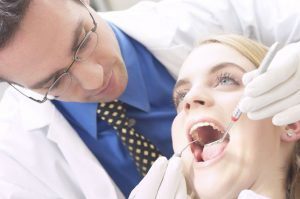US
One-third of Americans didn’t visit a dentist in the past year
 As many as one-third of Americans did not show up for a dental appointment within the last 12 months, according to a recent Gallup survey. The 2008 survey also indicated a similar no-show figure for dental visits.
As many as one-third of Americans did not show up for a dental appointment within the last 12 months, according to a recent Gallup survey. The 2008 survey also indicated a similar no-show figure for dental visits.
Oral health care is an important component in overall health management. Various studies make a link between poor oral health and debilitating conditions such as heart disease and stroke, atherosclerosis, rheumatoid arthritis, and diabetes. As part of good oral health care management, the American Dental Association recommends, at a minimum, that adults visit their dentists at least once per year.
This recent Gallup study – the Gallup-Healthways Well-Being Index – that shows that about one in three Americans did not meet this minimum recommendation, interviewed 178,072 adults and 64.7 percent of them indicated that they had visited a dentist at least once within the last 12 months.
The researchers identified a noticeable link between household income and visits to the dentist. More people in the higher income brackets indicated they had visited the dentist with more than 8 out of 10 households reporting an annual income of $120,000 or more admitting to at least one visit to the dentist in the past 12 months, compared to 4 out of 10 in households earning $12,000 per year admitting to a dental visit within the past year. This indicates that persons in the higher income brackets were twice as likely to report visiting the dentist when compared to persons living in households in the lower income brackets.
The study also reported other socio-economic links to dental visits likelihood with Blacks, Hispanics, and young adults aged 18 to 29, and persons living in the South being among the least likely groups to admit to visiting the dentist in the past 12 months. In fact, the researchers found that about 70 percent of persons identified as White and Asian said that they visited the dentist compared to 55 percent in the Black and Hispanic group. Married people and women, when compared to unmarried people and men, were also more likely to visit the dentist during the study period.






